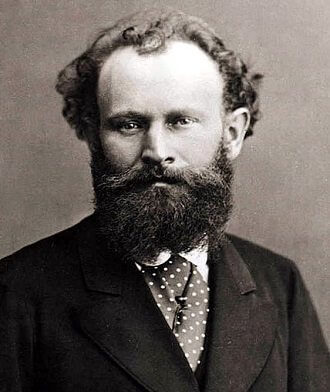
Overview: Portrait of an Artist
Manet was born to an affluent family in Paris, France, in 1832. His father was a judge, and his mother was distantly related to the royal family. From a young age, Manet found himself drawn to art. His uncle took him to the Louvre often, and soon enough Manet was convinced of his future as an artist. His father, however, had other plans. He tried to send his son to work in the Navy, but was unsuccessful. Eventually, he accepted his son’s passion, and invested in the young Manet’s career by paying for his art lessons. He worked his way through Paris’ thriving art scene, often attaching himself to controversy to further his fame. He died in 1883, in Paris, leaving behind hundreds of his paintings.
The Artistic World of Manet
The Realism artistic movement found itself born from the political, economic, and social turmoil of mid-19th century Paris. The movement strayed away from the idealistic paintings of the Romantic period it preceded. They focused on capturing truer, often “uglier” portraits of life. Manet and other painters worked with dark, earthy tones in their work. He depicted modern, everyday life, and for his uncensored, nonconformist nature, he found himself barraged with controversy – not something he wasn’t opposed to.
ROMANTICISM

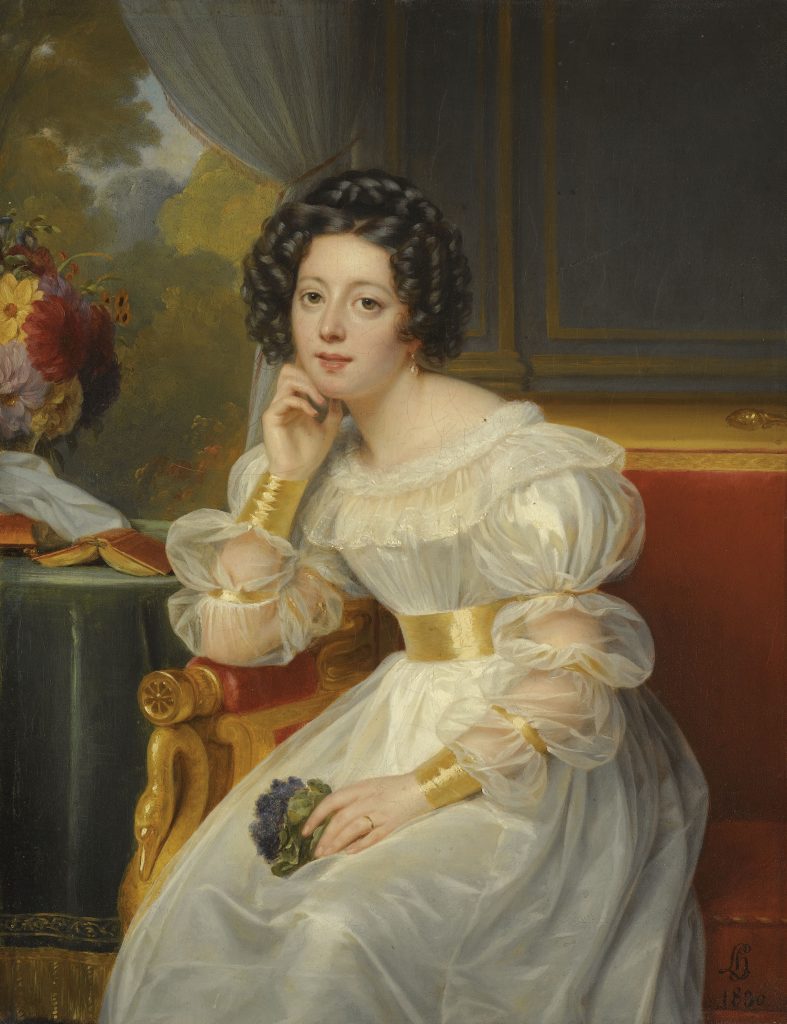
REALISM
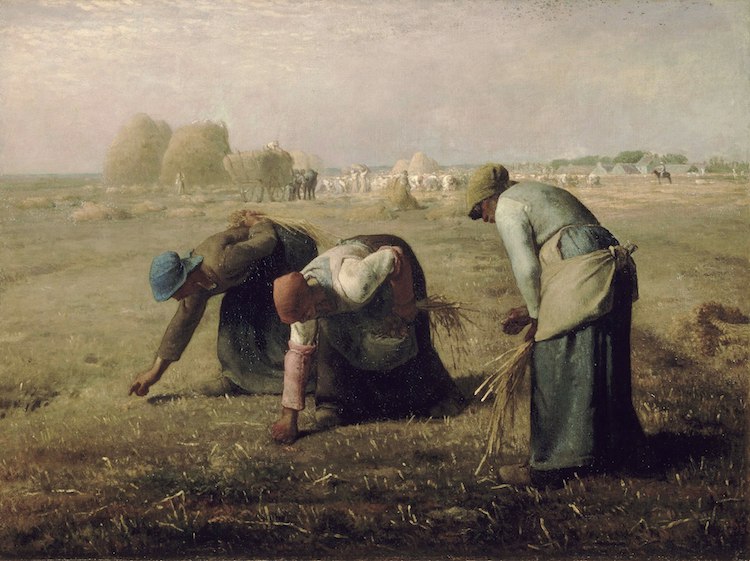
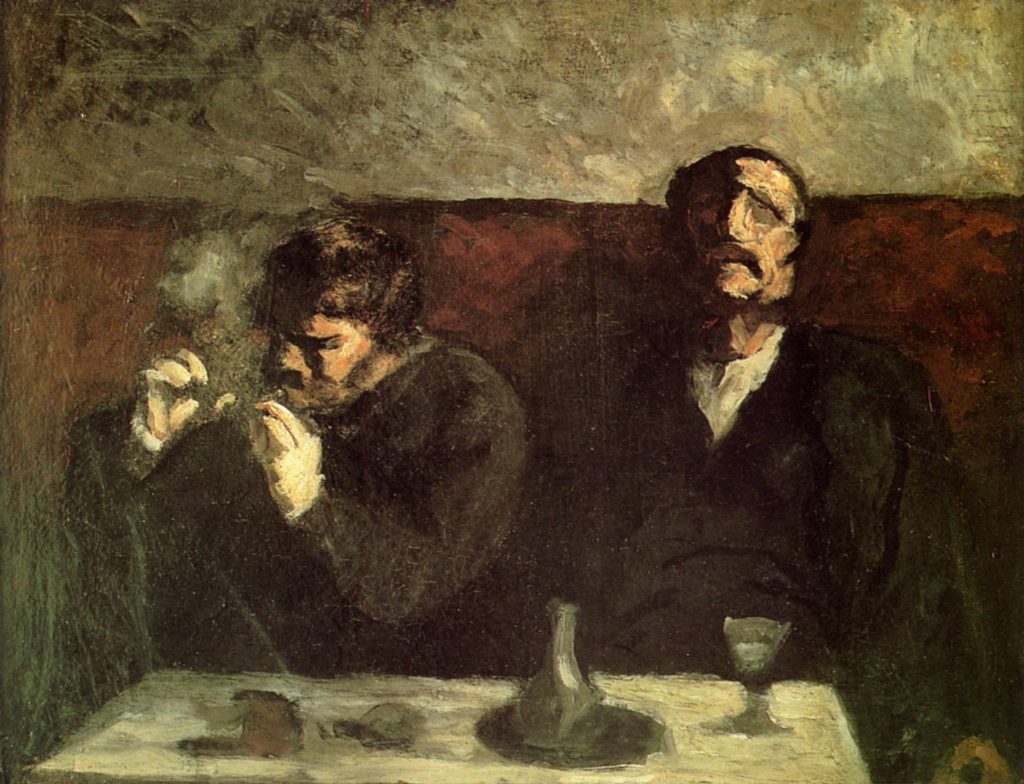
Pivoting away from Realism, Impressionists also worked to convey truth, but in a different way. They wanted to convey emotion, and evoke feelings. They played with light, and often depicted outdoors, natural settings. They didn’t focus on conventional subjects (portraits, historical scenes, etc). Manet didn’t consider himself an impressionist, but his avant-garde, stylistic choices, influenced impressionists. He’s often been dubbed the “Father of Impressionism.”
Across Both Worlds
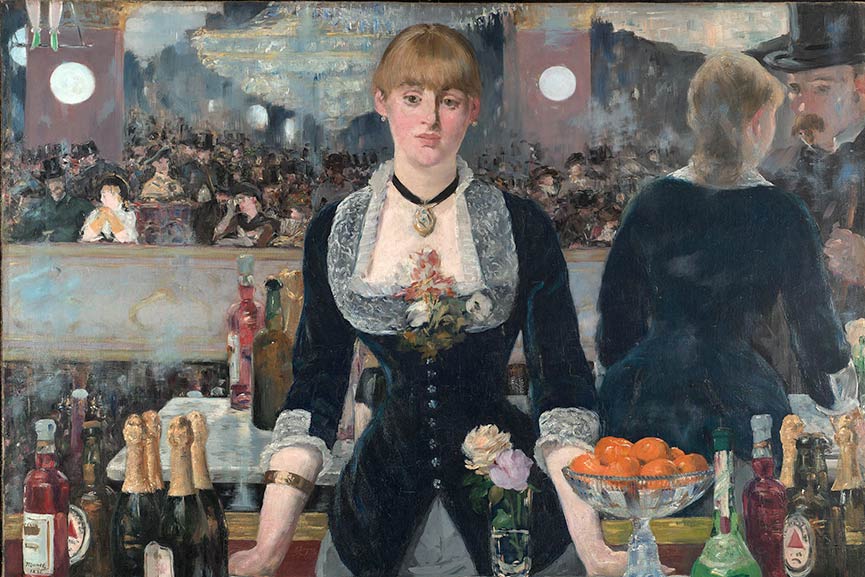
A Bar at the Folies-Bergère is considered Manet’s last great painting. It depicts a lively scene at one of Paris’ night clubs, the Folies-Bergère; which Manet was known to frequent. This work bridges the worlds of realism and impressionism. In it, a barmaid is scene in front of a mirror, that reflects the busy, party atmosphere of the club. Off to the side, a gentleman speaks to the barmaid. As a result, the barmaid stares a little off-center, looking to him. Her solemn expression catches the eye. Manet’s ability to capture this feeling, and make audiences understand it, stems from the impressionists’ attempts to depict and translate feeling in their works. His unblended and unshaded colors creates strong juxtapositions in composition (For example, Manet paints bright oranges against the barmaid’s dark overcoat.) Along with this, he uses unconventional, short, fleck-like brush strokes, borrowing from the impressionists – or the impressionist’s borrowing from him. Also, the modernity the painting captures, that of a nightclub, and not a grand setting or historical event, mirrors the sentiments of both realism and impressionism’s nonconformist, untraditional natures. It seems apt that the last painting of an artist caught between two artistic movements embodies the spirit and technique of both.
Impressionistic Style of Painting
“You would hardly believe how difficult it is to place a figure alone on a canvas, and to concentrate all the interest on this single and universal figure and still keep it living and real.”
~ Édouard Manet
Manet’s Art
Édouard Manet was considered a controversial artist due to his stance to not want to conform to artist style that plagued the time and era he was in. He believed it was nothing less than just mere copying and pasting with no real feelings from the artist and was boring. Several of his paintings exhibit his beliefs and thoughts on the subject of using old painting style impressionism. In this section I will be presenting a few of those paintings.
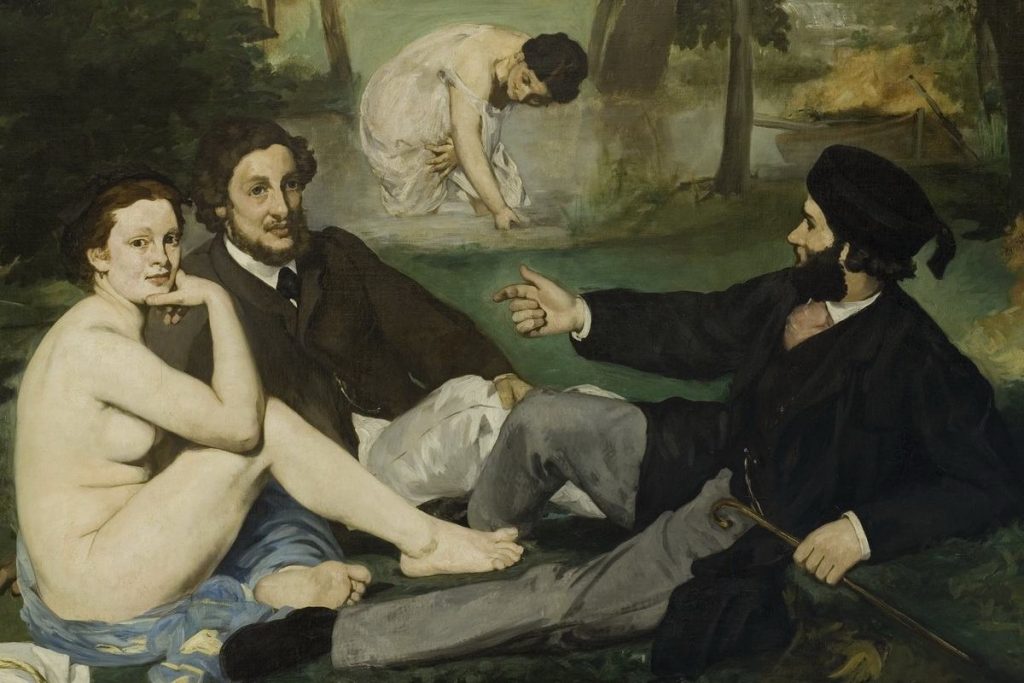
The Luncheon on the Grass is to be considered Manet, first controversial painting to grace the eyes of those who saw it when he entered it in to a painting exhibition. This was the introduction to his stance of non conformity and his rebellion against the old rigid rules of the artist world. The painting shows two men and two women sitting on the grass having what is a picnic, as innocent as this description is the true shock is that one of the woman is completely nude and sitting in a way that does not hide her body from the man sitting to her left and the viewer gets a full view of her backside. Many people who saw this painting were extremely critical of this painting. The naked woman was to mock the ideal of using goddesses and mythological personification of women and used her in an everyday atmosphere to show that places her as an everyday woman but almost as if she was a prostitute. Many were upset about this due to the original idea of painting naked women was to praise them as godlike.
So, they’d prefer me to do a nude, would they?” “Fine I’ll do them a nude . . . Then I suppose they’ll really tear me to pieces. They’ll tell me I’m just copying the Italians now, rather than the Spanish. Ah, well, they can say what they like.”
Manet’s remarks to French journalist Antonin Proust in 1862
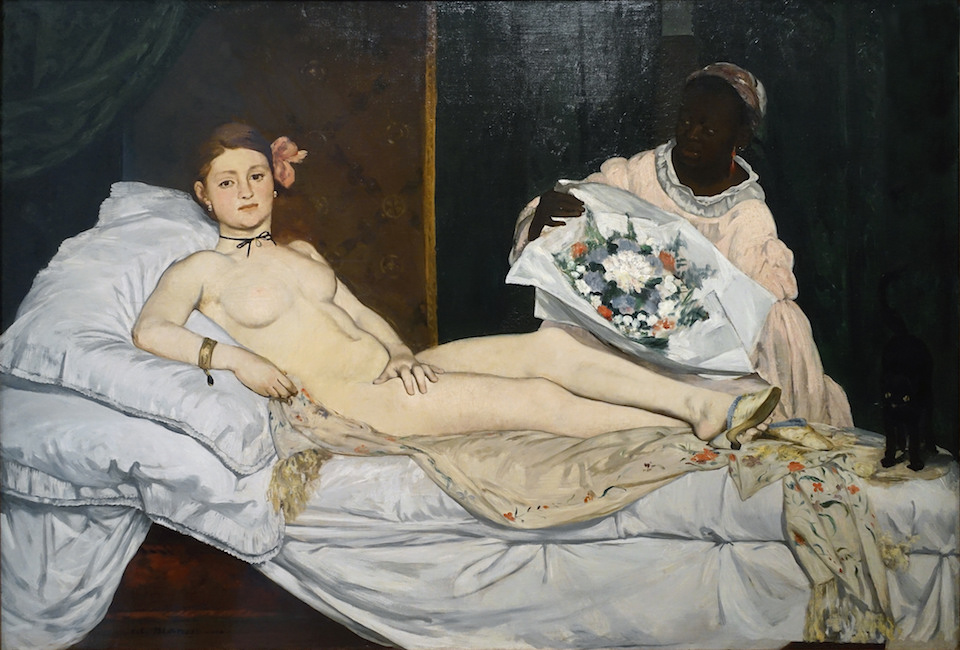
Olympia, another one of Manet’s famous works follows the same ideal of portraying a naked woman without consequence considered this painting to be his greatest work ever. Going against the ideals of portraying naked women as god-like and deity’s, Olympia is presented to the public as a prostitute who is unashamed. Here Manet painted no evidence of the young woman trying to hide herself or cover up away from the public and out right staring down those who gaze up her. This painting was submitted to the Salon and was accepted without contest unlike The Luncheon on the Grass. But it was criticized and ridiculed by those who saw the painting. One of the most famous names for reference is “Venus with a Cat”.
Manet’s Influence
The Luncheon on the Grass and the Olympia are two of the most known and celebrated, although highly criticized works Manet produced during his career. Manet was skilled in the Impressionist Arts and studied under another famous painter, Thomas Couture. Couture was a famed and highly respected artist, whose works were seen to be the epitome of the art world. And Manet was aware of this but he still chose to reject the style that he learned and decided to create his own lane of art that wasn’t ready to be accepted by the art critics of his time. Édouard Manet is credited with being a revolutionary artist with his skill of bringing together both impressionism and realism. Creating a space for many to become respected and highly regarded artist in their own right.
Conclusion
Édouard Manet transformed the art scene he was a part of, and the art world as we know it. His work, often attached to controversy, struggled to find places in Salons in Paris at the time, but find themselves in museums and exhibitions throughout the world today. His work has been praised by Renoir, Cézanne, Van Gogh, and many of his contemporaries and the present art world.
Citations
“Bob Ross – Peaceful Reflections (Season 15 Episode 4)”. YouTube. Bob Ross, 2016. https://www.youtube.com/watch?v=gYuH4Ilqdhs.
Dermovsesian, Mosig. “Painting like Manet, Free Tutorial, Manet’s Palette and Technique”. YouTube. Artist’s Life Show, 2019. https://www.youtube.com/watch?v=il4lYngiiVQ.
“Impressionism Movement Overview.” The Art Story, 2020. https://www.theartstory.org/movement/impressionism/.
“Realism Movement Overview.” The Art Story, 2020. https://www.theartstory.org/movement/realism/.
“Édouard Manet and His Paintings.” Édouard Manet: Paintings, and Biography of Édouard Manet, 2020. https://www.manet.org/.
“Édouard Manet.” Artble, July 19, 2017. https://www.artble.com/artists/edouard_manet.